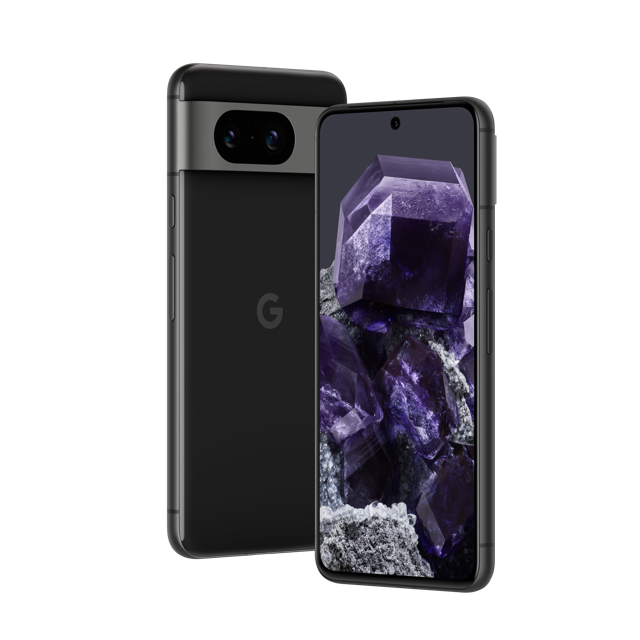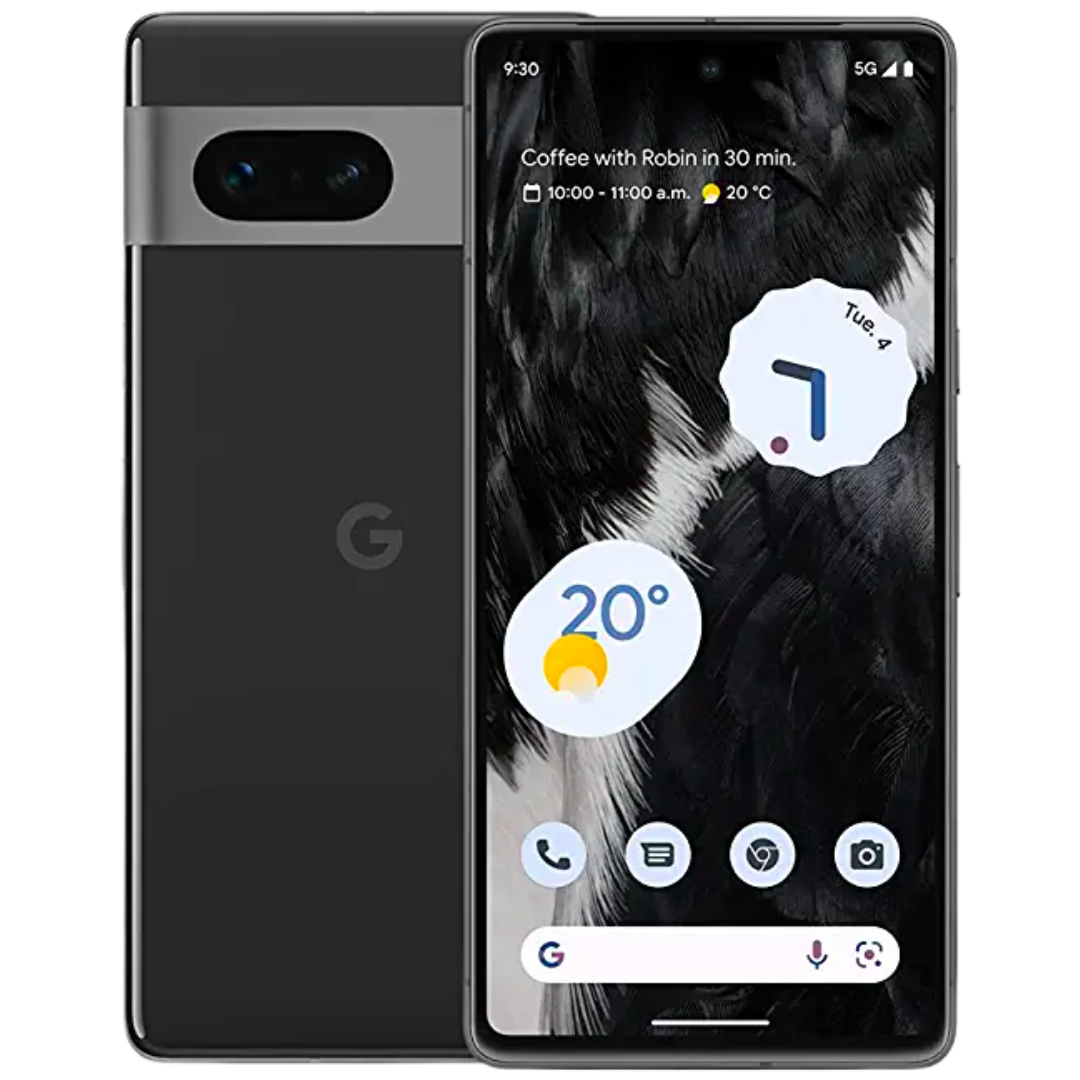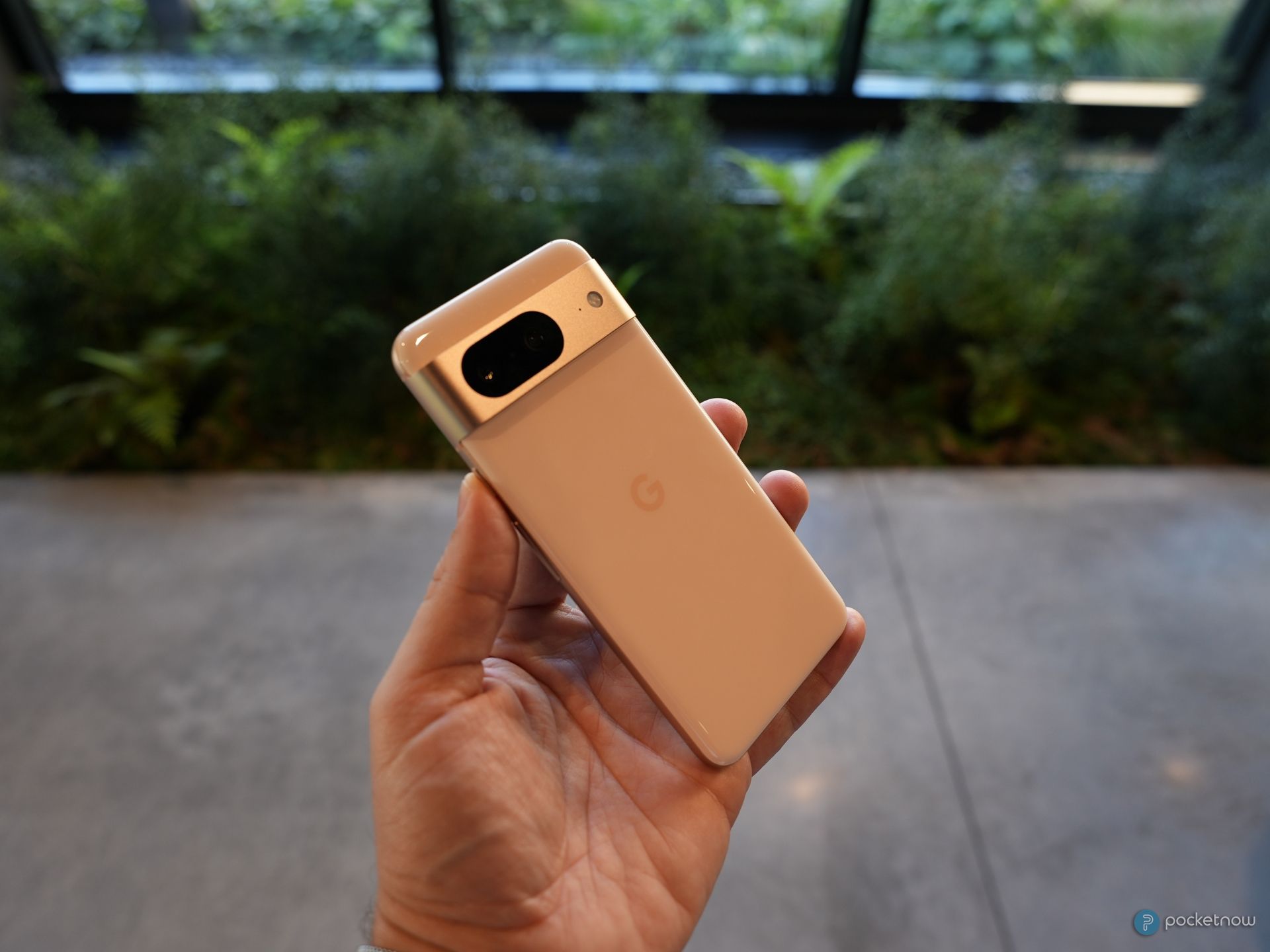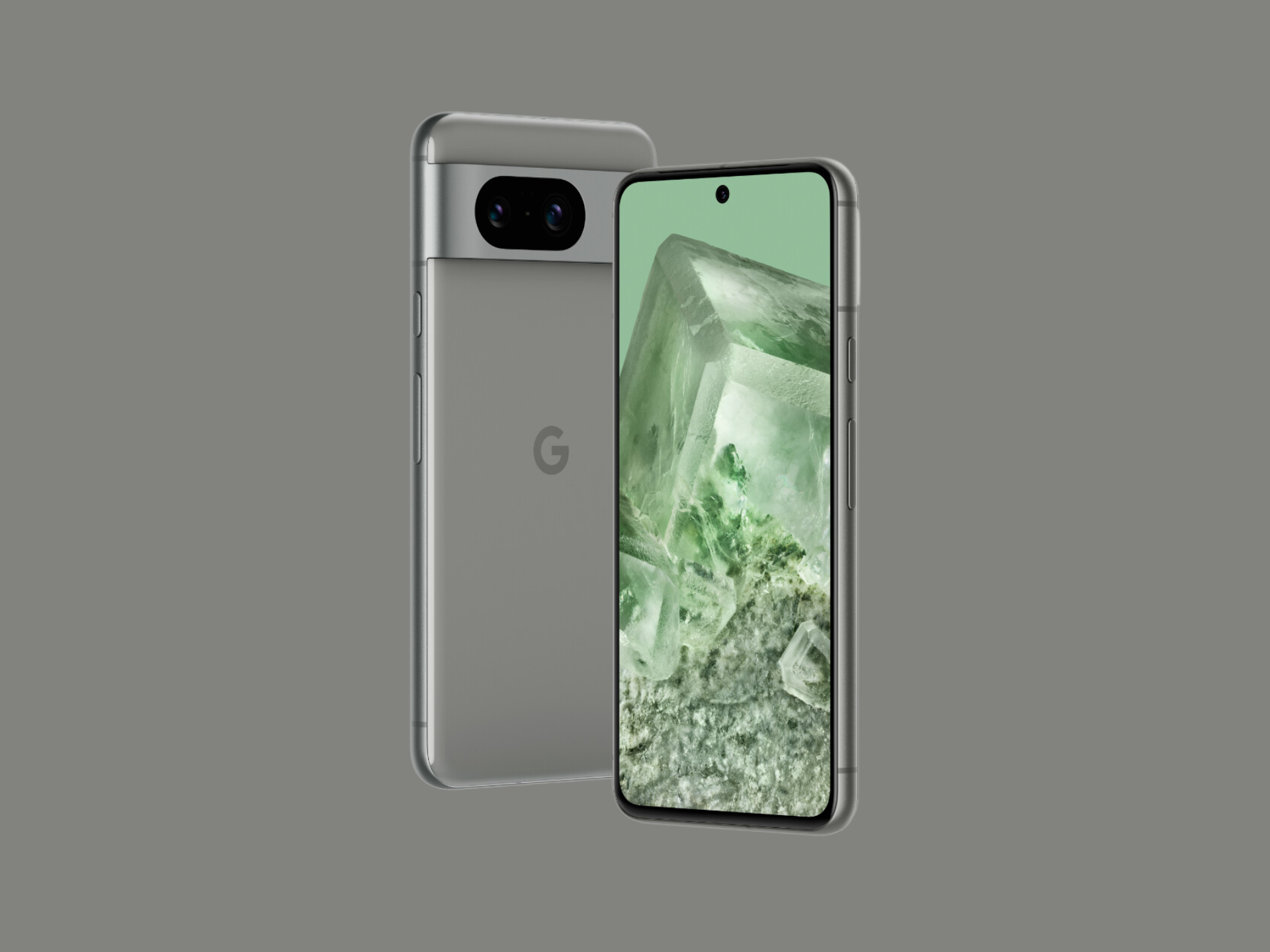-
Google Pixel 8
The Google Pixel 8 features a 6.2-inch display with adaptive refresh rate (up to 120Hz). It also ships with the improved Google Tensor G3 and a 4,575 mAh cell that will allow for all-day use. And if you enjoy capturing images on your smartphone, its cameras, enhanced by AI will help capture the best moment in your life.
Pros- 120Hz display with 1400 nits of peak brigthness
- Faster performance
- Upgraded camera
- 7 years of OS & Security updates
Cons- It costs $100 more than the Pixel 7
- Still only 27W wired charging
-
Google Pixel 7
$499 $600 Save $101The new Google Pixel 7 is powered by the all-new Google Tensor G2 chipset. The device is coupled with 8GB of memory, and it has 128/256GB storage tiers. The phone comes with a significantly improved camera system, and it's more portable than the last generation. The Pixel 7 is available in Obsidian, Lemongrass, and Snow colors.
Pros- It's more affordable
- Excellent camera performance
- Fast & responsive
Cons- Slow charging
- 90Hz display
- 3 years of OS and 5 years of security updates
Google announced two new flagships at its October 4, Made By Google event, the new Google Pixel 8 and Pixel 8 Pro. The new flagship duo comes with the new Google Tensor G3 chipset, new cameras, improved displays, and many new software features. Both smartphones have bigger batteries than their predecessors, and come in new colors. At the event, Google also announced the new Google Pixel Watch 2, and new shades of colors of the Google Pixel Buds Pro wireless earbuds.
Here, we’re comparing the Google Pixel 8 vs Pixel 7, the latest to last’s years best Pixel offering. We’ll take a closer look at the design changes, price, display improvements, and other hardware and software improvements.
Google Pixel 8 Google Pixel 7 Brand Google Google SoC Google Tensor G3 Google Tensor G2 (5 nm, octa-core) Display 6.2-inch Super Actua Display 6.3-inch, OLED, FHD, 90Hz, 1000 nits RAM 8GB LPDDR5X 8GB Storage 128GB or 256GB 128/256GB Battery 4,575 man 4,355 mAh Ports USB-C (Gen 3.2) USB-C Operating System Android 14 Android 13 Front camera 10.5MP Dual PD, f/2.2, Fixed Focus, 95-degree FoV 10.8MP, f/2.2 Rear camera 50MP Wide Octa PD Camera, f/1.68, 82-degree FoV, 2x Optical-quality Zoom | 12MP Ultrawide, f/2.2, 125.8-degree FoV, Autofocus Primary: 50MP, f/1.9, Dual pixel PDAF, OIS; Ultra-wide: 12MP, f/2.2, 114-degree FoV Connectivity Wi-Fi 7, 6E, or 6 (based on region), Bluetooth 5.3, 5G, LTE 5G, LTE, Wi-Fi 6E, Bluetooth 5.2, NFC Dimensions 150.5 x 70.8 x 8.9 mm 155.6 x 73.2 x 8.7 mm Colors Rose, Obsidian, Hazel Obsidian (Black), Snow (White), Lemongrass (Yellow) Weight 187 grams 197 grams Charge speed 27W 20W fast wired charging, 21W wireless charging IP Rating IP68 IP68 Price $699 From $599
Google Pixel 8 vs Pixel 7: Price & Availability
The Google Pixel 8 comes with 8GB of RAM and 128GB storage; there’s another model with 256GB of storage and the same amount of memory. The base model retails for $699, while the 256GB tier costs $759. All models come in Hazel, Obsidian and Rose colors and are available at most retailers and carriers across the country.
The Pixel 7 launched on October 6, 2022. Similar to the Pixel 8, it was available with 8GB of RAM and 128GB and 256GB storage configurations. The 128GB model retailed for $599, while the higher capacity cost $699. The phone was available in Obsidian, Lemongrass, and Snow colors. The Pixel 7 remains available at most carriers and retailers, and it can be purchased for as low as $450 during special events, so if you’re after a bargain.
Google Pixel 8 vs Pixel 7: Design & Display
The Pixel lineup hasn’t changed much since the Pixel 6 series, and Google made minor enhancements to the Pixel 8, compared to the Pixel 7. The most noticeable difference comes down to the different colors, and the small dimension differences. The Pixel 8 is shorter, narrower, and 0.2mm thicker than the Pixel 7, measuring 150.5 x 70.8 x 8.9 mm vs 155.6 x 73.2 x 8.7 mm. This makes the Pixel 8 easier to manage and hold with one hand, and the each corner appears slightly more rounded off.
The weight is another place where you might notice some differences. The Pixel 8 weighs 187 grams, compared to the Pixel 7’s 197 grams. While the difference is minimal at best, Google managed to use this opportunity to shave off a few millimeters and lighten the load. We don’t mind this, since Google used some of the space to increase the battery capacity, but more on that later.
When it comes to the display, it was inevitable to see some small changes. The Pixel 8 packs a 6.2-inch display that’s slightly smaller than the Pixel 7’s 6.3-inch panel. The Pixel 8 uses an OLED panel that finally sports 120Hz refresh rate – while this isn’t an LTPO panel, it’s still great to see 60Hz-120Hz variable refresh on the more compact device. The phone also has a brighter panel that can peak at 2000 nits, and just like its predecessor, it still supports HDR10+. The resolution is the same at 1080 x 2040, and the screen is covered by the Corning Gorilla Glass Victus.
Google Pixel 8 vs Pixel 7: Camera
The camera on the Pixel 8 received a healthy dose of upgrades, and it now features a 50MP f/1.7, 25mm primary sensor with multi-directional PDAF, Laser AF, and OIS. The secondary camera is a 12MP ultrawide with f/2.2 and 126-degree FOV. This is the same camera found on the Pixel 7, except the FoV was slightly lower at 114 degrees.
The new primary sensor will provide slightly improved still photos and videos, and Google says it has added various improvements to enhance the quality in low-light and challenging lighting conditions.
The front-facing camera also received many new software advancements on the Pixel 8, despite the phone packing a similar sensor to the Pixel 7. The new device sports a 10.5MP sensor with f/2.2, 20mm lens with PDAF. The Pixel 7 has a 10.8MP sensor with f/2.2, 21mm lens.
The downside is that the Pixel 8 still lacks a dedicated telephoto sensor; therefore, users who want to zoom in will have to rely on Google’s digital magic to crop in and enhance content.
Google Pixel 8 vs Pixel 7: Battery
As we mentioned above, the Pixel 8 is slightly smaller and more compact, yet Google managed to squeeze in a larger battery. The Pixel 8 comes with a 4575 mAh cell, while the Pixel 7 packs a 4355 mAh battery. The improved Google Tensor G3 chip and the larger battery should be able to extend the battery life further and provide better efficiency and performance.
That’s not the only place where Google made some improvements, and the charging is also slightly faster on the Pixel 8. The phone supports 27W wired charging, and the company says it can go from 0% to 50% in 30 minutes. However, the wireless charging is now limited to 18W. The Pixel 7 supports 20W wired charging and 20W wireless charging, using the official Pixel accessories. It’s fair to say that both devices are on the slow side, and we’re still asking Google to keep up with the competition that now mostly follows the 60W charging standard.
Google Pixel 8 vs Pixel 7: Which should you buy?
If you already have the Pixel 7 – or perhaps you bought it recently – there’s very little reason to upgrade to the new Pixel 8, and it’s a little hard to justify spending $699 when there are so many similarities between the two devices. However, if you have the money and you can take advantage of the more responsive display and upgraded camera setup, not to mention, the improved battery life, by all means. It looks like the Pixel 8 is an excellent device.

Google Pixel 8
The Google Pixel 8 features a 6.2-inch display with adaptive refresh rate (up to 120Hz). It also ships with the improved Google Tensor G3 and a 4,575 mAh cell that will allow for all-day use. And if you enjoy capturing images on your smartphone, its cameras, enhanced by AI will help capture the best moment in your life.
For those who are using older smartphones, the Pixel 8 might be an excellent choice. It comes with the latest camera upgrades and software improvements, so if you’re after a device with the latest and the greatest, the Pixel 8 is worth considering. We’d also recommend the Pixel 8 for those who want to hold on to their smartphones for longer, since the new Pixel 8 will receive 7 years of OS, feature, and security updates from Google. For reference, Apple updates its devices for 5-6 years, so if Google can keep its promise, it might just have an easy winner here.



